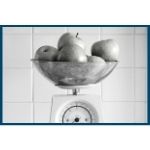Cherry Jam by Volume
Might as well post these together, since I seemed to have forgotten them back in June!
This artisan cherry jam uses a volume ratio to determine how much sugar should be added. It’s been adapted from David Lebovitz’s blog »
1. Buy as many cherries as you feel like pitting (or picking, as the case may be). I actually bought some dark Bing cherries for my sister’s shower and mom had some in fridge that were fading, so that’s what I used to test this recipe. He reckons, one pound of cherries will make one good-sized jar of jam, which makes sense since 1kg . I forgot to measure these ones first 🙁
Sadly, the pits were way to large for Mom’s cherry pitter, so I had to cut them out by hand. I washed and stemmed them first, then chopped them up (after sharpening my knife because they are round and slippery and you can’t distinguish blood from cherry juice, seriously).
2. Cook the cherries in a large non-reactive (i.e. stainless steel) stockpot. It should be pretty big since the juices bubble up. Add the zest and juice of one or two fresh lemons (I only had concentrate so I put in 2 Tbs, which is about ¾ of a real lemon and I didn’t have a lot of cherries, so it seemed appropriate). As I have learned, lemon juice adds pectin to help it gel.
4. Cook the cherries over medium heat, stirring occasionally, until they’re wilted and completely soft, which may take 15 to 20 minutes.
5. Once they’re cooked, measure out how many cherries you have (including the juice.) Use 3/4 of the amount of sugar. For example if you have 4 cups of cooked cherry matter, add 3 cups of sugar. It may seem like a lot, but that amount of sugar is necessary to keep the jam from spoilage. I had 1½ cups of cherries and used about 1 cup and half ¼ cup of sugar.
6. Stir the sugar and the cherries in the pot and cook over moderate-to-high heat. The best jam is cooked quickly and this took about 5 minutes to set, which surprised me! Remain vigilant and stir the fruit often, scraping the bottom so the fruit doesn’t burn.
7. Once the bubbles subside and the jam appears a bit thick and looks like it is beginning to gel, remove from heat and test it (by freezer plate or drip method). If not, cook it some more, turn off the heat, and test it again.
If you overcook your jam, the sugar will caramelize and it won’t taste good and there’s nothing you can do. Better to undercook it, test it, then cook it some more.
David Lebovitz suggests at this point you stir in a bit of kirsch, clear cherry eau-de-vie, or a few drops of almond extract, but not too much, or it will taste like a cheap Italian cake.
8. Ladle the warm jam into clean jars and cover. Process for 10 minutes in a hot water bath OR if you can’t help yourself from eating it all at once, cool at room temperature, then put it in the refrigerator where it will keep for several months.
This batch is for me!
